Area Rug Definition
An area rug is a piece of floor covering in different sizes and qualities. They are either hand weaved or machine-made in various materials like wool, silk, and artificial fibers. Basically, carpets/rugs of three kinds:
Handmade Rugs
Hand knotted Rugs
Machine Rugs
Click here for the types of carpets made at FiRugs.
Rug In Different Languages
Rug in Hindi – गलीचा
Rug in Gujarati – કાર્પેટ
Rug in Bengali – কার্পেট
Rug in Spanish – Alfombra
Rug in Italian – Tappeto
Rug in French – Tapis
Rug in German – Teppich
Rug in Japanese – カーペット
Rug in Swedish – Matta
Rug in Russian – ковровая дорожка
Difference Between Rug And Carpet
Rug Vs Carpet
| RUGS | CARPETS | |
|---|---|---|
| SIZE | The size of area rugs are more defined and are available in standard sizes. They cover a specific area and can be as large as broadloom rugs | Carpets differ in size. They are of larger sizes, and they can cover the whole surface area of a room. |
| COVERAGE | Rugs cover only a particular area, and they can be with style placed over a carpet. They can find spaces everywhere, including kitchens and bathrooms. | Carpet covers an entire area from one corner of a wall to the other corner. These are often for living rooms and bedrooms. |
| MATERIAL | Area rugs come in natural as well as unnatural materials. Wool rugs are the original rugs of all others. | Carpets mostly come in polypropylene, nylon, blends, and smart strands. These unnatural fiber floor covers are inexpensive and can handle high traffic. They are also straightforward to wash/clean and are durable as well. |
GROUND RULES FOR RUGS
floor plans
1. Get the large one you can comfortably buy.
The more ground you cover, the roomier space will seem. Neutral natural‑material styles are the least pricey choice to have.
2. Next rule to follow
Leave out at least 8-18 inches of bare floor around it. Larger rooms require a more extended border.
3. Ideally, place a smaller accent rug on top of a large neutral one.
It’s stylishly a clever way to add pattern and texture and renew the look of space when seasons change. (else, the evergreen Moroccan trend already exists.)
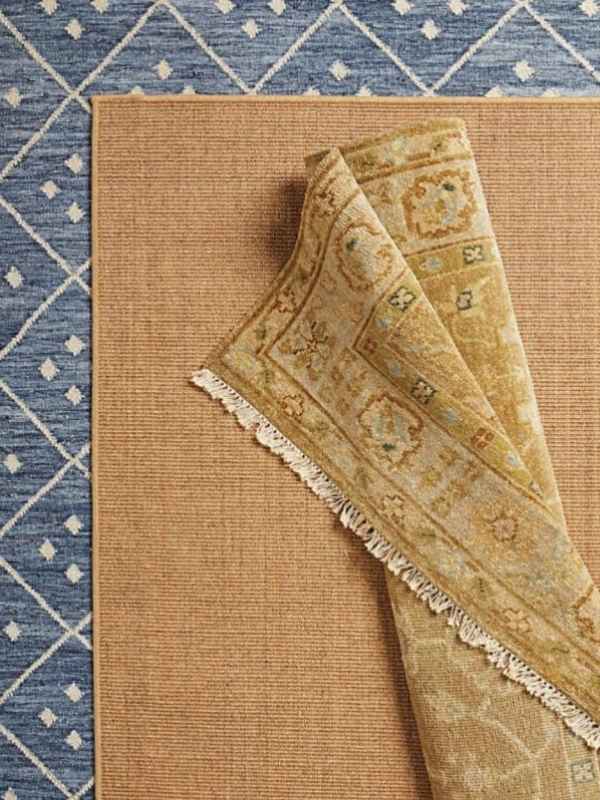
5 Modern style rugs
A rug can be one of the easiest ways to make a new home feel more like yours.
The FI Rugs team shows you some modern carpet options to consider.
Viscose & Bamboo Rugs
Viscose is a semi-synthetic material acquired from cellulose and bamboo silk from the bamboo. Viscose is additionally called “art silk” as it mimics the luster of soft silk rugs but at a fraction of the cost. Bamboo rugs and Viscose area rugs are exceptional if one wants to include a touch of richness or go glam. They may not last like the wool, but in hot regions, the cool touch to the foot is soothing. Remember to pick a high quantity(more KPSI) one.
Shaggy Rugs
The shag area rug is still a comfort piece for many. The tickling feeling from their soft long piles over the skin also brushes the entire space to beauty.
Natural Woven Rugs
Natural fiber rugs tend to have an uneven texture because they experience very few processing. They are also mostly undyed, so the natural color of jute and sisal can pass; this aspect has a “grounding” effect on homes. Even when tinted, the color remains earthy; FI Rugs occasionally mix jute with colored cotton to incorporate softer and more interesting, especially for areas where families gather.
“It is heartening to be environed by natural fibers in the house because we humans have lived in nature more than in smart homes. In those kinds of conditions, we can rest, heal, enjoy and focus on a healthier life “.
Round Rugs
The round shape is rising in stylish home interiors, much because of the global inclination for organic shapes. A round-shaped rug is perfect to create a vignette, be it a side table and an armchair blending, or even pouf or an armchair.
Recycled Rugs
Like woven recycled cotton, denim, leather, and also silk is an interesting accent piece, a recycled rug, made from the most basic plastic trash polyethylene-teref-paladar (from water bottles) is appealing as well. The material feels and looks like wool or cotton, and is durable and breathable.
Rug made from it is ideal for outdoor and heavy traffic areas. Additionally, by selecting a recycled outdoor rug, you are seeking the aim to form sustainable spaces.
proS N' Cons
WOOL
Advantage:
Whether machine-made or handwoven, nothing beats woolen rugs. Wool naturally repels moisture and stains and is very durable.
Disadvantage:
It is the most costly option, plus expert cleaning is needed every two years.
NATURAL
Advantage:
Fibers such as jute, sisal, bamboo, and hemp are inexpensive, sustainable, and durable materials.
Disadvantage:
Can be rough when walking barefoot and stain easily; clean up spills as they occur.
COTTON
Advantage:
It is affordable, suitable for children, soft to crawl, and easy to clean.
Disadvantage:
Cotton wear off sooner, so avoid placing one in heavy traffic zones, such as the entryway, etc.
SYNTHETIC
Advantage:
You can have the appearance of an expensive woolen rug for extremely low; moreover, they are stain-free.
Disadvantage:
Synthetic fibers are neither as soft as cotton nor as durable as wool.
POLYPROPYLENE
Advantage:
This synthetic fiber placed in most indoor and outdoor rugs is virtually mildew and fade resistant and withstands kitchen spills as well as heavy rain.
Disadvantage:
It’s not cushy. The fabric may have a plastic feel underfoot.
Types Of Indian Rugs And Carpets
HAND-KNOTTED
A hand-woven rug is one made by wrapping thousands of knots around cotton thread strings on a vertical loom. These Persian oriental rugs are the costliest forms of rugs because of the time it consumes in the making and high quality 100% New Zealand wool.
The other factor that turns them expensive is the high labor cost of weaving them and its raw materials. The natural fringes in them differentiate knotted carpets from the tufted carpets.
HAND-TUFTED
A tufted carpet is one made by hooking strands of quality wool with a semiotic tool called tufting-gun into a cloth. The cloth is tightly tucked across a metal frame to hold it tight for an elegant tufting.
They have latex at the backside to keep the wool more firmly, followed by another layer of cloth backing to add firmer support. Most of the inexpensive modern rugs with a pile height are the tufted rugs.
FLATWEAVE
These are also called Kilims or Dhurries and are usually inexpensive to buy. They do not have pile height and are traditionally made in wool yarn, cotton, jute, hemp, silk, and blends.
SHAGGY
These are the fancy rugs that are handwoven on flat looms. There are tons of design patterns shag rugs have. They are of low cost and are gorgeous in living rooms to the dining rooms.
MACHINE-MADE
They are a type of carpet made by powered machines that follow an automated pattern weaving. It uses durable synthetic fibers like polypropylene for ease for the machine to weave. These carpets and rugs are affordable and sustainable. (FI Rugs Do Not Produce Machine-made carpets)
Some of the other types of rugs are Hand-loom, Hide-rugs, Braided, and Berber rugs.
"Your rug or carpet should be considered a piece of art for the floor and your selection process should reflect this."
Md. Faisal
how big should my rug be?
living room
Tip
You want either all the furniture to sit on top of the rug comfortably or all the front legs to be on the rug.

bedroom
tip
The rug should frame the bed. That means you need an 8x10 for a queen and 9x12 for a king. Front feet of bedside tables can sit on the edge.

dining room
tip
Let the chairs guide you. The rug needs to be large enough that the chairs remain on it even pushed back from the table.

what to look for when buying an area rug

Best Places For Area Rugs

Living room

One of the main places to lay a rug is in a living room or a guest room. Order for custom rugs for living rooms as they have various sizes and shapes. The living room is the place in a house with a significant amount of traffic. Hence, choose a rug that can handle high foot-traffics.

Dining room
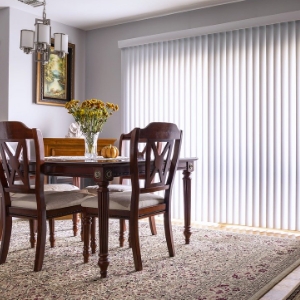
A dining hall is a place with tables and chairs. You can place a rug below the dining table and bring an interior designer look.

Bathroom
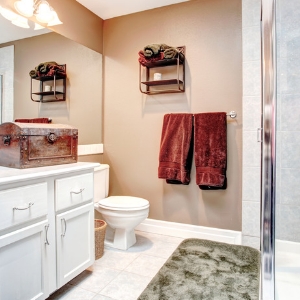
These are area rugs to cover small areas in the bathroom. Bathroom rugs made with nylon fiber best suit near bathtubs.

KITCHEN
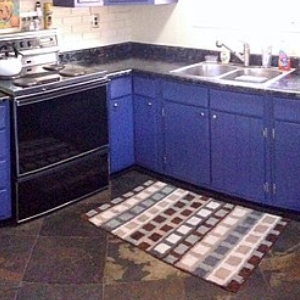
Interior designers say that a kitchen is the heart of every house. Shouldn’t the heart be beautiful too! A kitchen rug is usually in the size of about 4’x6′. Runner rugs fit quite well in the narrow spaces of the kitchen.

WALL RUG
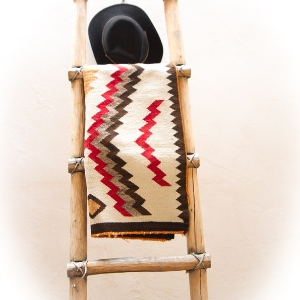
A wall to wall rug is another popular way to decorate a space with a carpet embedded on a wall. It speaks of great wall decor far louder than any other wall hangings.

ENTRYWAY
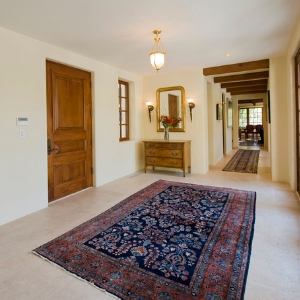
Another place where you can place a rug for a great first impression is at the entryway. Runner rugs are a cool way to decor hall-ways as well.
BEDROOM
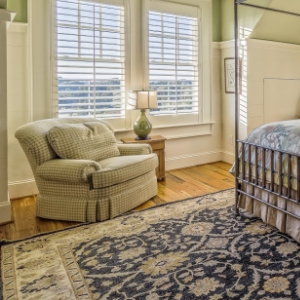
The room where one’s privacy and love are exchanged is the most special part of the house, so it got to be more special too. Nothing like a good bedroom rug can create the feel the bedroom needs.
STAIRCASE
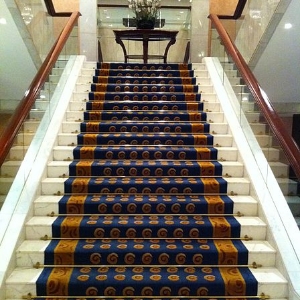
Running a rug over the stairs isn’t all the new concept, but rolling out the right piece can alone add the “o ma gosh” factor to the interior’s decoration. The most popular stair runners are those made in sisal and wool.
OUTDOOR
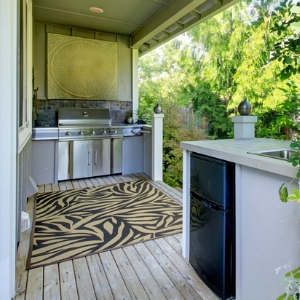
Interior flooring coverings are different from those used outside the house. Outdoor rugs made of nylon are the most common for outdoors. Synthetic fibers bear all outdoor exposure like rainfall, sunlight, and dust.
rug affairs
Making Of Rug
Rugs are woven in many different techniques using different tools. They can be handmade as well as machine-made. Some rugs are with a pile height; others may not have any pile at all. For example, the Dhurrie/Kilim or flatweave rugs have no pile height.
Other than the material’s market value, the rugs’ price depends on the time taken to finish weaving an entire piece. It takes plenty of time to hand-weave a hand-knotted oriental rug. It’s this precious time taken that these are one of the costliest rugs in the world.
What Is A Rug Pile
A pile is the height or thickness of a rug/carpet. The standard pile height is around 6 millimeters. It can vary as per the preference; some have even lower piles while other area rugs like shaggy and Moroccan rugs have very high piles. Others like flatweave and kilim rugs have no pile.
The Best Quality Area Rugs
People misunderstand the meaning of quality while referring it to a hand-knotted rug. Quality here does not exactly mean the carpet being good, inadequate, or inferior. It instead means the number of knots tied per square inch(KPSI) in a rug. In other words, to compact the wool pile, higher would be the quality of a carpet. Some of the standard known rug qualities are 50 KPSI, 80 KPSI, and 100 KPSI.
What Kind Of Rugs Are The Softest
The soft rugs are those made in bamboo silk and viscose material, also known as staple fiber. The rug texture is soft, silky, smooth, velvety, and has a good shine. In wool made, carpets and rugs made with New Zealand wool and worsted wool are the softest ones compared to other types. Indian wool is a cheaper alternative to NZ wool rugs.
Rug Sizes
Area rugs are something that is an essential part of making any home super adorable. Every space has its shape and sizes. Since there are various sizes and styles of homes, rugs also need to be designed in various styles and sizes.
There are rugs for small homes, and there are rugs also for big houses. They can also be intricate and ostentatious as per the requirement of the buyer.
